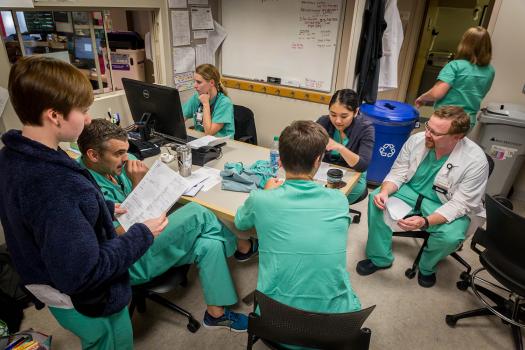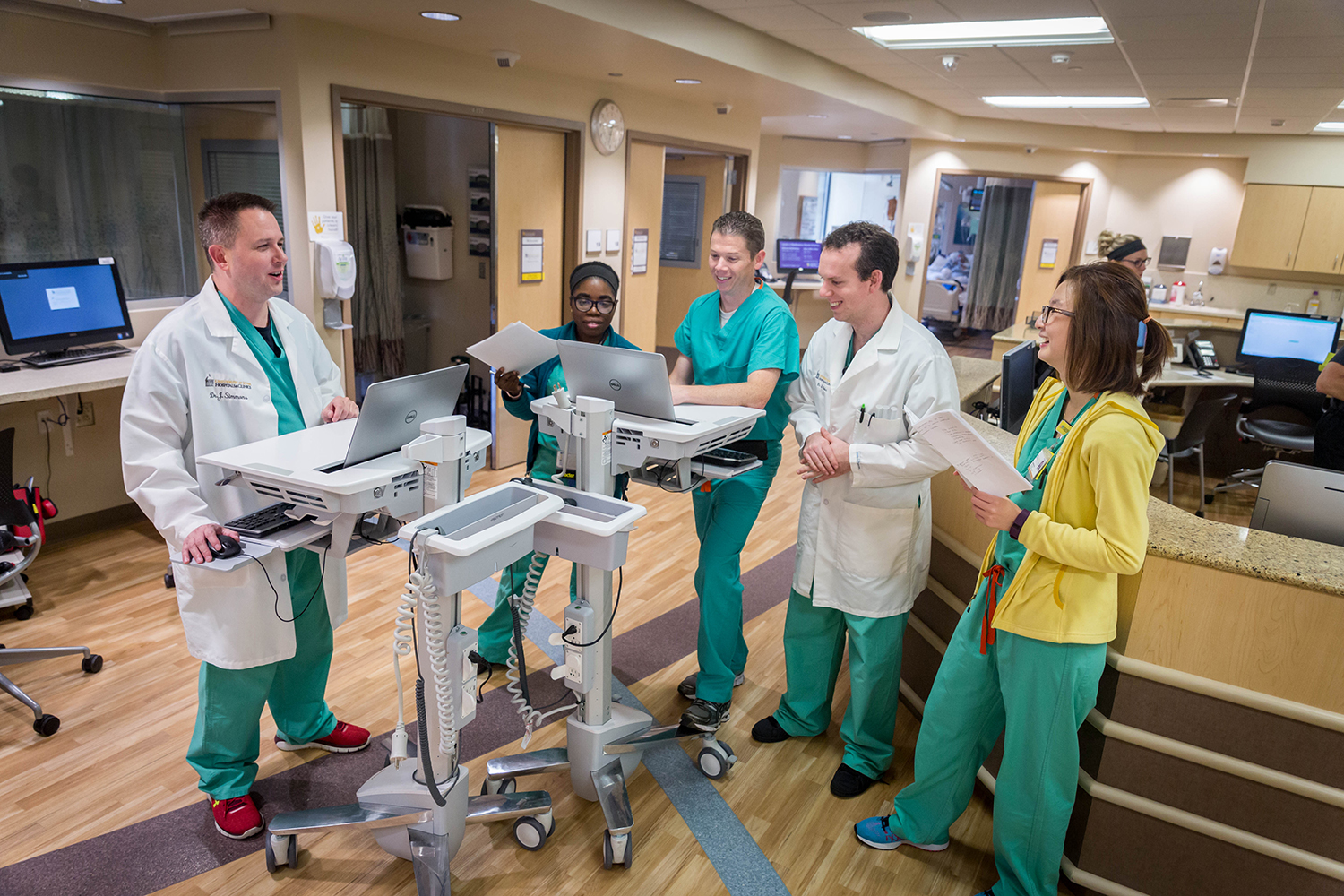
The Department of Anesthesia is committed to the development of anesthesiologists skilled in the practice of critical care. The Surgical Neuroscience Intensive Care Unit/Cardiovascular Intensive Care Unit (SNICU/CVICU) at University of Iowa Hospitals & Clinics has been medically directed by the Department of Anesthesia since the 1970s.
The 40-bed SNICU is a major referral center for support of critically ill patients in Iowa and surrounding states. Typical SNICU patient problems include:
- Trauma
- Post-surgery
- Post-organ transplant:
- Liver
- Kidney
- Septic shock
- Multi-system organ failure
- Peri-operative complications
- Acute neurological injuries
- Head injuries
- Spine injuries
- Stroke
The SNICU is located in close proximity to the main operating rooms and the Critical Care Laboratory, enhancing efficiency of patient care. More than 3,000 patients per year are admitted for care in the SNICU/CVICU.
The CVICU is a combined medical and surgical ICU and located one floor below the SNICU. Anesthesia trainees on this rotation cover only the surgical patients, but are immediately available to help with the management of airways or lines on the medical patients.

In both intensive care units, patient care is directed by board-certified intensivists who are physicians with primary certification in anesthesia, internal medicine, surgery, or emergency medicine. Patient care is provided directly by residents, fellows, and supported by other health care providers, including critical care nurses, pharmacists, respiratory therapists, dietitians, social workers, and physical therapists.
Mid-level practitioners (PAs and ARNPs) work with residents and fellows to facilitate safe, effective, and efficient patient care. The mid-level practitioners help residents with activities such as documentation of patient care (writing notes in the electronic medical record) and writing orders. We believe that close professional relations between specialists and optimal patient care result from this team approach to clinical service and teaching.
The didactic program emphasizes evidence-based practice and includes lectures, mechanical ventilation laboratories, journal clubs, morbidity and mortality conferences. Residents get significant experience in critical care procedures, including emergency airway management, mechanical ventilation, fiberoptic bronchoscopy, echocardiography, and broad aspects of hemodynamic monitoring. With graded levels of responsibility during the training process, residents develop the expertise and confidence to handle any patient care emergency in the OR or in the ICU.